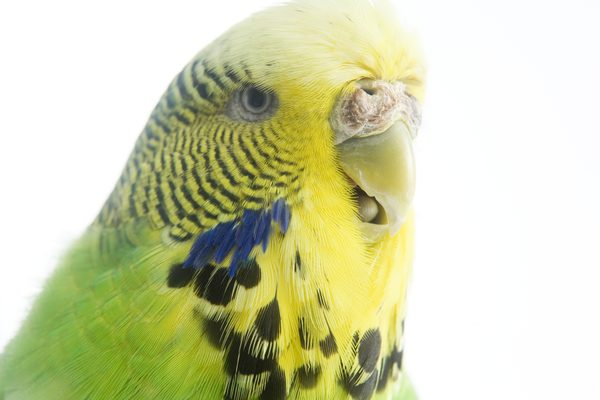American Parakeet

Description
American Parakeets, also called Budgerigars, are small members of the parrot family. They can become really good mimics, and are wonderful family pets. American Parakeets come in a variety of colors and personalities.
An average adult size is around 9 inches long from head to tail, they can live 10 to 20 years with proper care.
Scientific Name
Melopsittacus undulatus
Country Of Origin
Australia
Size
Small, up to 9 inches
Life Expectancy
15 years
Noise Level
Low; frequent chattering
Talk / Trick Ability
Low
Characteristics
One of the most commonly kept pet bird in the United States, American parakeets, also known as budgerigars (budgies), are chatterboxes that love to play and hop around on their playgyms and sometimes their owners. This pet bird is active and curious, and will use all the cage room an owner can provide for it. A larger cage is ideal for these parrots. The term American budgie is used when comparing budgies to the English budgie, which is a budgie that is bred for the show bench. It is a much bigger budgie with a larger head than the American budgie. American budgie and English budgie are not scientific classifications or formal names, just general terms used in the pet industry. A mutation, such as color or pattern, occurs naturally. However, bird breeders can breed for certain traits, and they have been breeding for different color mutations in budgies since the 1870s. The first color mutation recorded breeding was in Germany of a black-eyed yellow mutation budgie. There are two basic colors in budgies: green and blue. All color mutations come from a dominant gene modifying these colors and expressing them in different shadings. Common color mutations are: sky blue, albino, olive, cobalt, mauve, violet, dark green cobalt, yellowface, greywing, cinnamon. Common patterns are spangle, pied, opaline, lacewing, spangle, mottled. There is also the crested and buff.
Behavior / Health Concerns
Neglected budgies/parakeets can be susceptible to a host of avian diseases, including psittacine beak and feather disease (PBFD), fatty liver disease, psittacosis, polyomavirus, cancer, giardiasis, gout and chronic malnutrition. If you are not willing to dedicate time to this pet parrot and provide it plenty out of cage time and toys to keep it busy, give the bird a larger cage and a companion bird to please both yourself and the bird. A solely seed diet is not healthy for a budgie. Fresh fruits and vegetables should be a large part of this bird’s diet. A budgie’s sex can easily be determined, especially when they are mature. Males have a deep blue cere while females have a tan to brown colored cere. As babies, both males and females have a light purple cere. Some males in certain color mutations of budgies have ceres colored similarly to that of a baby budgie. While both sexes make good pet birds, males tend to be better talkers and females are known to be quieter but also more aggressive and playful. Determining the age of a budgie is fairly easy. Until they are 5 to 6 months old, budgie babies have stripes down their cere. The iris of these common pet birds is black at a young age and changes to gray as it matures. The beak of a young budgie is slightly colored black, disappearing after a few weeks of age.